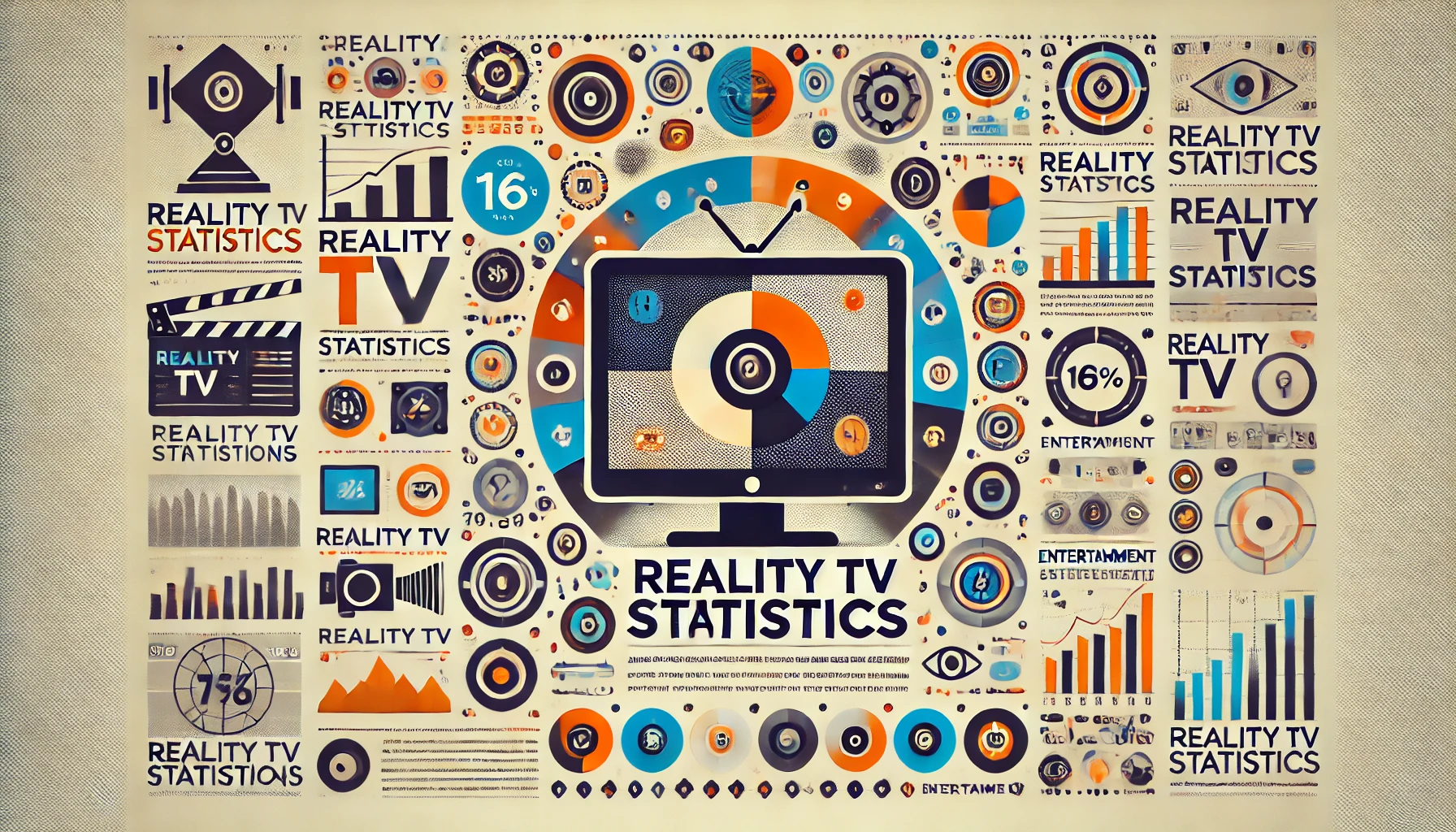Communication Statistics By Communication Tools, Remote Work And Most Used Language
Updated · Sep 20, 2024

WHAT WE HAVE ON THIS PAGE
- Introduction
- Editor’s Choice
- Importance Of Effective Communication At Workplace
- General Workplace Communication Statistics
- Communication Tools Used In The Workplace In 2024
- Remote Work Communication Statistics
- Digital Communication Statistics
- Workplace Communication Post COVID-19 Pandemic
- Effective Communication Skills Increase Productivity
- Employer Perception Of Communication Skills
- Communication Platforms At Work
- Employer And Employee Communication At Workplace Statistics
- Most Used Language In Business Communication
- Communication At The Workplace And Employee Engagement
- Communication With Various Generations At The Workplace
- Consequences Of Poor Communication In Workplace Statistics
- Conclusion
Introduction
Communication Statistics: The world of business is changing fast and is more unpredictable than ever. This is largely due to quick tech advances and a more global market. Because of this, most companies need to adjust their strategies to stay competitive in such an uncertain environment. One important area that many businesses focus on is communication skills. Being able to communicate well is crucial in today’s fast-moving and competitive business world.
Good communication is the base of any successful company. It’s important for every employee, no matter their role or department. How well a company communicates can directly affect its performance and productivity. In this article, “Communication Statistics”, we’ll work on mastering effective communication. We’ll examine some of the latest communication skills, stats, and trends to help you stay updated and keep your business on the cutting edge.
Editor’s Choice
- Email is the most widely used tool, with 52.2% of employees checking and using it at least once a week.
- Most workers (77.3%) feel that digital communication tools make them more productive.
- 70% of workers in various industries prefer email over other methods of communication.
- 40% of employees around the world think their company needs more collaboration and communication.
- On average, employees spend 5 hours per week reading and writing emails. Over a year, this amounts to 10.8 days, or 432 days, over 40 years of working.
- 3% of employees say that waiting for email responses adds stress to their work.
- 63% of workers believe that at least half of their colleagues need to improve at communicating.
- Communication Statistics stated that only 13% of employees agree that their company’s management communicates well with everyone else.
- Workers spend about 3.2 hours per week trying to understand unclear information from their coworkers.
- 2% of Gen Z think that Baby Boomers are slow to embrace new technology at work.
Importance Of Effective Communication At Workplace
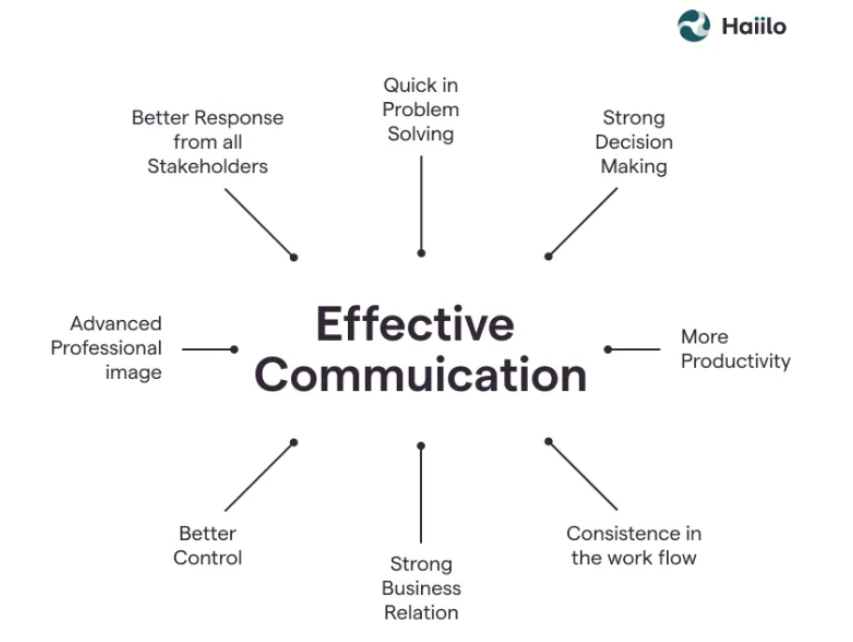
(Source: enterpriseappstoday.com)
- Team Building: Creating strong teams depends on how well team members talk and work together. Effective communication strategies can help build better teams, which will boost morale and make employees happier.
- Everyone’s Voice Matters: Employee satisfaction often depends on feeling heard, whether sharing an idea or raising a concern. Good communication should allow everyone, regardless of their position, to speak openly with their peers, colleagues, and managers.
- Encouraging Innovation: When employees can share their ideas without fear of being judged or punished, they’re more likely to contribute new ideas. Organizations that promote open communication are usually more innovative.
- Supporting Growth: Communication is important both within the company and with external parties. Good internal communication ensures that your external messages are consistent. Successful growth projects need clear communication, and everyone involved, whether inside or outside the company, needs to be on the same page.
- Effective Management: Managers who communicate well can lead their teams more effectively. It’s easier to delegate tasks, handle conflicts, motivate people, and build relationships when you communicate well. Good communication isn’t just about speaking to others but also about helping them communicate with each other.
General Workplace Communication Statistics
- 40% of employees around the world think their company needs more collaboration and communication.
- 33% of all workers say that not having clear internal communication is a problem.
- Communication Statistics stated that just 28% of employees blame poor communication as the top reason for missing deadlines.
- 33% of workers believe that a lack of upfront communication hurts employee morale the most.
- Only 13% of employees agree that their company’s management communicates well with everyone else.
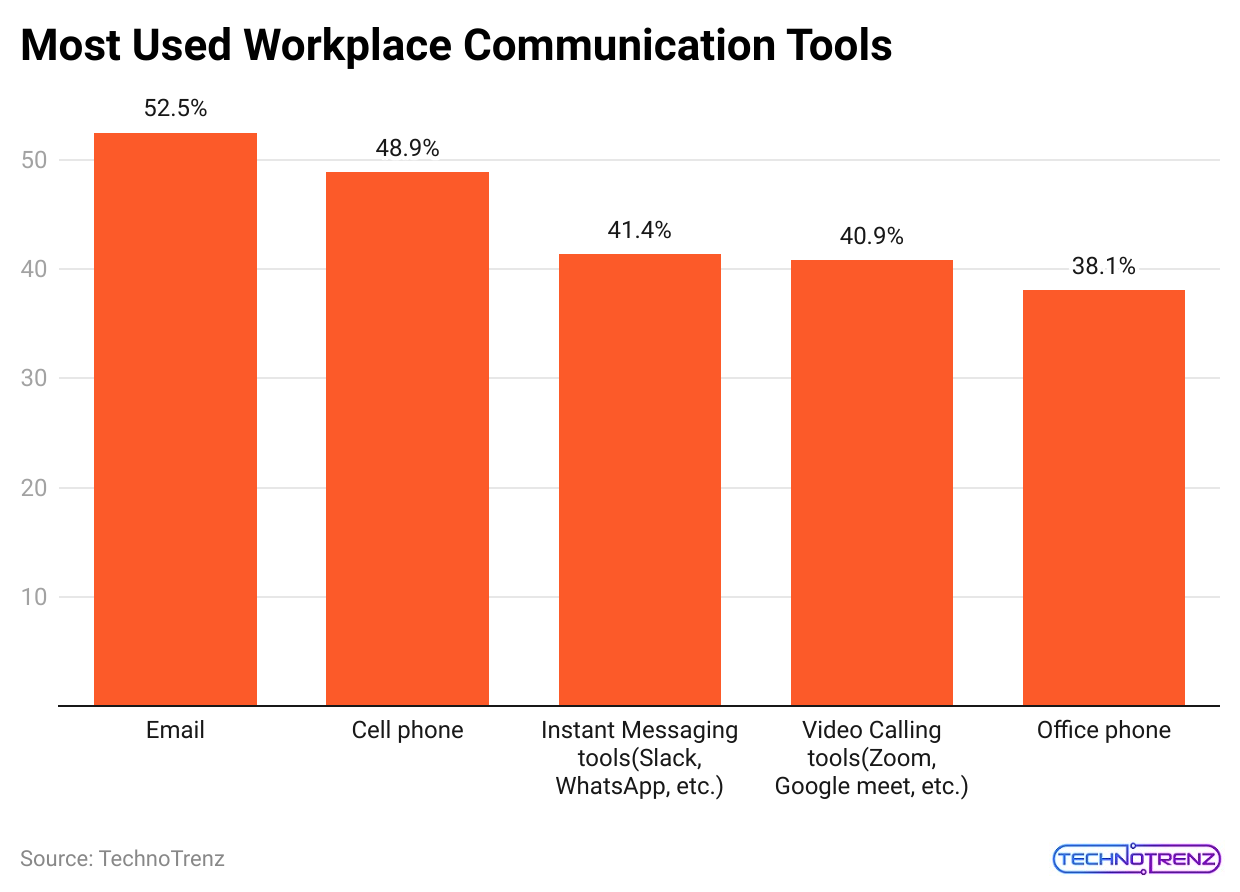
(Reference: emailtooltester.com)
- 43% of on-site workers say they lose trust in leadership due to poor communication.
- 96% of employees want a more empathetic approach to workplace communication.
- 97% of workers feel that communication affects their task performance every day.
- Nearly 70% of the workforce would be more productive with better communication processes at work.
- When employees get better communication tools and skills, productivity can go up by as much as 30%.
- Companies that use effective internal communication tools are 3.5 times more likely to achieve better results.
- About 93% of communication is nonverbal, while only 7% comes from spoken words.
- 85% of people think eye contact is crucial in business communication.
- Communication Statistics stated that around 70% of people believe facial expressions, like smiling, affect business communication.
- 55% of people say they can accurately interpret emotions from facial expressions.
- Employees who are better informed are 77% more productive than those who are less informed.
- Good team communication and collaboration can increase employee retention by 4.5 times.
- 89% of employees are part of at least one global team, as per Communication Statistics.
- 62% of corporate employees work with colleagues from three or more cultures.
- 1% of the UK population speaks English as their first language.
- 81% of global recruiters think cross-cultural skills are the most important for job candidates, followed by multilingualism (77%) and active listening (75%).
Communication Tools Used In The Workplace In 2024
- Despite the rise of various communication tools today, phone calls are still relevant. Workers are finding that effective communication platforms include options like instant messaging, video calls, and VoIP systems.
- Among video call platforms, Google Meet and Zoom are the most popular, with 40% and 46% of users, respectively.
- Remote and hybrid workers use VoIP systems more frequently than those who work in the office.
- According to Communication Statistics, over 25% of all respondents use VoIP systems, with 37% of remote workers, 23% of in-office workers, and 24% of hybrid workers using them.
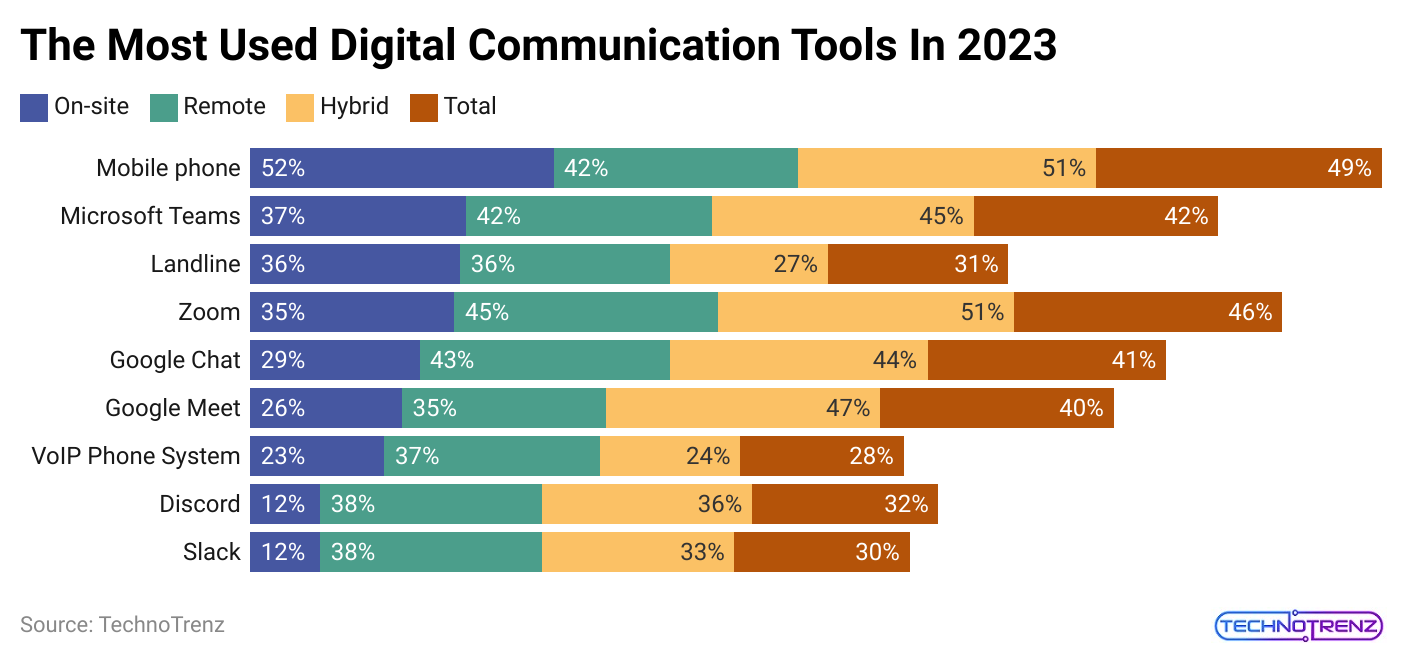
(Reference: forbes.com)
| On-site | Remote | Hybrid | Total | |
| Mobile phone | 52% | 42% | 51% |
49% |
|
Microsoft Teams |
37% | 42% | 45% | 42% |
| Landline | 36% | 36% | 27% |
31% |
|
Zoom |
35% | 45% | 51% | 46% |
| Google Chat | 29% | 43% | 44% |
41% |
|
Google Meet |
26% | 35% | 47% | 40% |
| VoIP Phone System | 23% | 37% | 24% |
28% |
|
Discord |
12% | 38% | 36% | 32% |
| Slack | 12% | 38% | 33% |
30% |
The best communication tools vary for in-office, remote, and hybrid workers:
- For in-office workers, 38% find that the mobile phone is the most effective tool. The landline follows this at 22% and Zoom at 21%.
- For remote workers, 22% say Zoom and 22% say Google Chat is the most effective tool.
- Hybrid workers show a similar pattern: 31% prefer Zoom as the most effective tool, while 23% prefer Google Meet.
Remote Work Communication Statistics
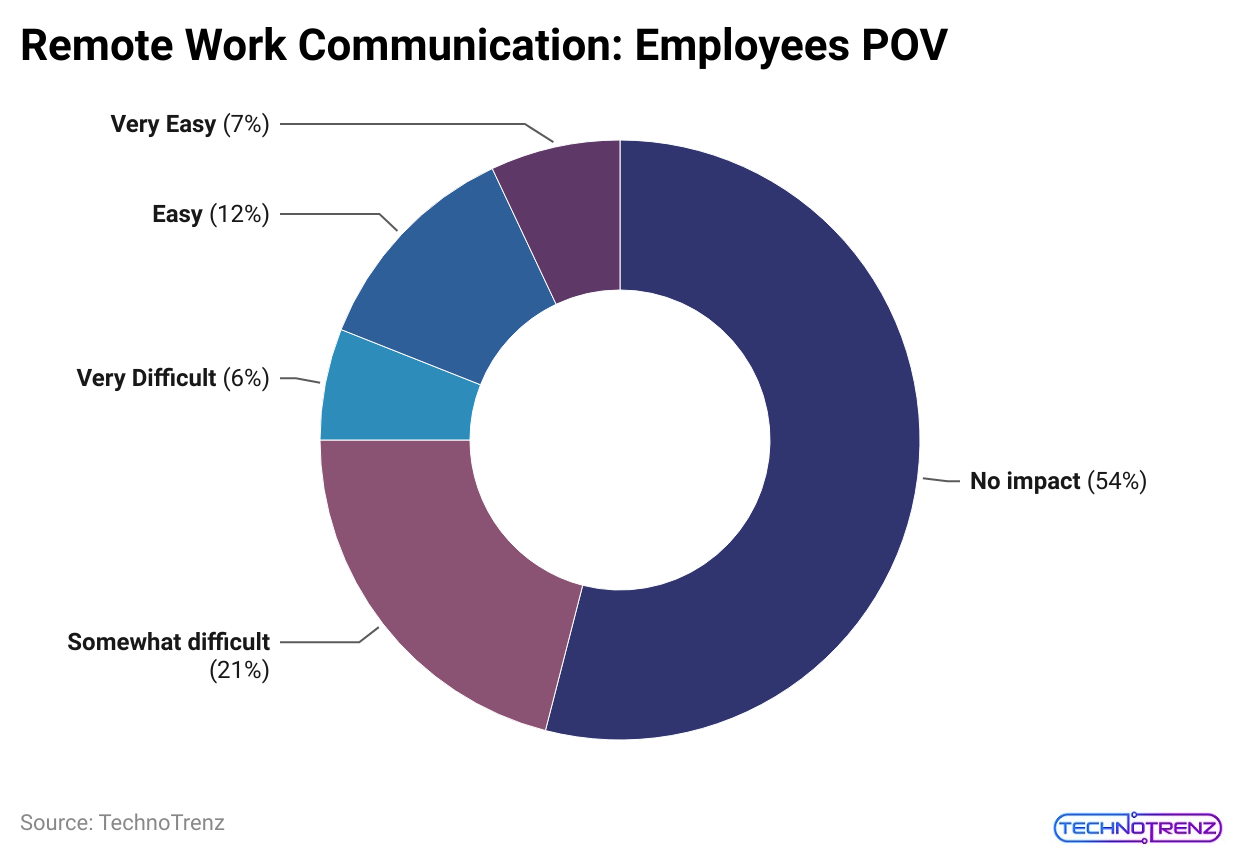
(Reference: jobera.com)
- According to the Connected Culture Report 2020, 71% of employees felt more connected to their coworkers after moving to remote work during COVID-19.
- However, 14% of remote workers needed help with different time zones.
- Communication Statistics stated that almost 11% of workers found it hard to disconnect from work and stay motivated.
- In a 2023 survey, 54% of respondents said that remote work didn’t change their business communication, while 21% felt that it made communication a bit more challenging.
- 6% of employees found that communication at work became very difficult with remote work.
- 12% preferred communication through remote work over communication in the office.
Digital Communication Statistics
- 13 billion people were online in 2019. Communication research shows a big increase in global internet users. In 2019, there were 4.13 billion internet users, up from 3.2 billion the year before.
- By June 2023, there were 4.57 billion active users, which is 59% of the world’s population.
- Most internet users are from Asia, with 2.5 billion people online daily.
- Europe has 727 million users, North America has about 333 million, and Latin America has 467 million.
- Communication Statistics state that almost 90.3% of people in North America use the Internet. Internet penetration rates show the percentage of a country’s population that uses the Internet.
- North America has the highest rate, at 90.3%, followed by Europe at 87.2%. Africa has a lower rate, at 47.1%, while Asia’s rate is 59.5%.
- In 2019, 854 million people in China were online, making China the country with the most internet users last year.
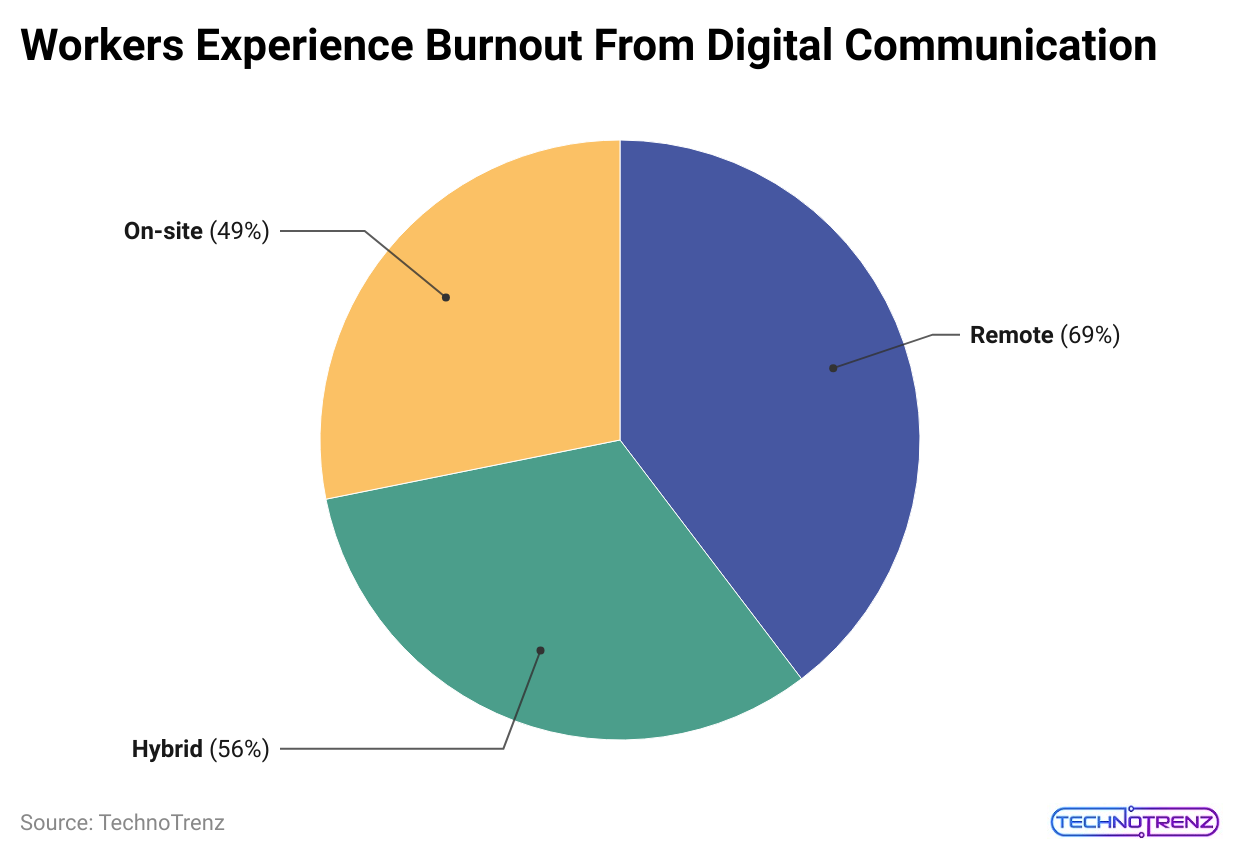
(Reference: forbes.com)
- In comparison, the United States had 313 million internet users, India had 560 million, and the UK had 63.54 million.
- 91% of users connect to the Internet via mobile devices. Most internet users, 91%, now use smartphones or tablets to go online, browse social media, or chat.
- Almost 90% of internet users around the world use social media each month. The top six social networks each have over 1 billion active users monthly.
- With so many digital communication tools available, workers are feeling more pressure to stay connected outside of regular work hours.
- Nearly 25% of workers said they always feel this pressure, and 35% said they often feel it.
- On the other hand, only 7% of workers said they rarely feel pressure, and 10% said they never do.
- 60% of workers said digital communication makes them feel more burned out. This issue affects workers whether they are working from home, on-site, or both.
- Communication Statistics stated that almost 70% of remote workers reported burnout from digital communication.
- Hybrid workers experienced burnout at 56%, while on-site workers had a lower rate at 49%.
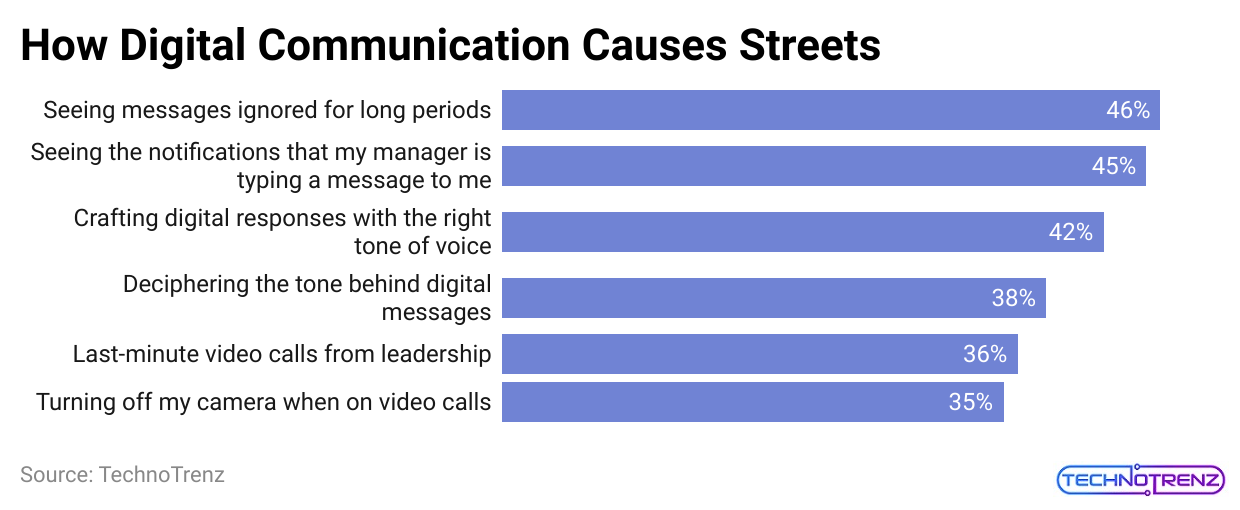
(Reference: forbes.com)
| Reasons | % |
|
Seeing messages ignored for long periods |
46% |
| Seeing the notifications that my manager is typing a message to me |
45% |
|
Crafting digital responses with the right tone of voice |
42% |
|
Deciphering the tone behind digital messages |
38% |
| Last-minute video calls from leadership |
36% |
|
Turning off my camera when on video calls |
35% |
- For 46% of people, seeing messages go unanswered for a long time caused stress at work.
- 45% of people also experienced stress when they saw a notification that their manager was typing a message, according to Communication Statistics.
- Other stress factors included trying to get the right tone in digital responses (42%), figuring out the tone behind digital messages (38%), last-minute video calls from leaders (36%), and having to turn off the camera during video calls (35%).

(Reference: forbes.com)
| Type | On-site | Remote | Hybrid |
| Audio Call | 9% | 16% |
15% |
|
Direct Message |
11% | 14% | 16% |
| 10% | 25% |
18% |
|
|
In-person conversation |
34% | 14% | 12% |
| Text Message | 19% | 14% |
11% |
|
Video Call |
12% | 17% |
17% |
- When it comes to preferred communication methods, many workers still favour traditional tools.
- Email is the top choice, with 18% of all respondents preferring it (25% of remote workers and 10% of on-site workers).
- Video calls are the next most popular choice at 17%, followed by direct messages at 16%. For on-site workers, face-to-face conversations are the most preferred method, with 34% of them choosing this option.
- Preferences are similar across genders, but there is a difference in video call preferences: 22% of men prefer video calls, while only 12% of women do.
- Age also affects communication preferences. Forty per cent of respondents aged 59 to 77 prefer in-person conversations, compared to 17 per cent of those aged 18 to 26 and 16 per cent of those aged 27 to 42.
- Many workers consider digital communication a key part of their day, but they use different methods.
- Over half (56%) use video for communication and 55% use audio. Personalized greetings are less common, with 44% using them.
- Emojis and GIFs are still quite popular, with 42% using emojis and 34% using GIFs.
- Women prefer personalized greetings more than men (47% vs. 40%). Men prefer audio more than women (63% vs. 50%), and they also prefer video more (61% vs. 53%).
- People aged 43 to 58 have the highest preference for GIFs (42%), compared to 31% of those aged 18 to 26, as per Communication Statistics.
- Young people aged 18 to 26 are the most likely to prefer video (69%). Video preference decreases with age: 60% of those aged 27 to 42, 50% of those aged 43 to 58, and only 23% of those aged 59 to 77.
Workplace Communication Post COVID-19 Pandemic
- The COVID-19 pandemic has greatly changed how we communicate at work.
Here are some key statistics showing these changes and the challenges faced by both employees and organizations:
- Remote Work: Because of the pandemic, 45% of employees are working from home, which has increased the need for effective remote communication.
- Communication Challenges: 70% of employees say they have trouble communicating with colleagues while working from home, especially with spontaneous conversations and teamwork.
- Productivity: Despite these challenges, 60% of employees feel they are still productive working from home, with 40% feeling more productive than before.
- Communication Strategies: Good communication strategies are essential to handle the spread of COVID-19. Research indicates that effective communication can improve adherence to safety measures by 20-30%.
- Leadership Communication: 75% of employees wish their managers would communicate more effectively.
- Employee Engagement: 60% of employees feel more engaged when they receive regular updates from their managers.
- Communication Infrastructure: A study on Frontiers shows that 21% of those in charge of internal communication still need a plan, and 60% of companies still need to develop long-term communication strategies.
- Additionally, research on Nature.com shows that during COVID-19, the number of meetings per person increased by 12.9%, and the number of attendees per meeting went up by 13.5%. However, the average length of meetings decreased by 20.1%.
- As a result, internal communicators have become crucial to organizational success.
- They help ensure effective communication and collaboration between departments and are key in implementing the right technologies to support digital transformation and employee productivity.
Effective Communication Skills Increase Productivity
- Effective communication can increase productivity by 25% when employees feel more engaged with their work and connected with their colleagues.
- 68% of employees say they waste too much time on productivity issues due to poor communication.
- Communication Statistics state that around 40% of employees worldwide believe that the Workplace lacks good communication and teamwork.
- Research shows that 72% of business leaders say effective communication has improved their team’s productivity.
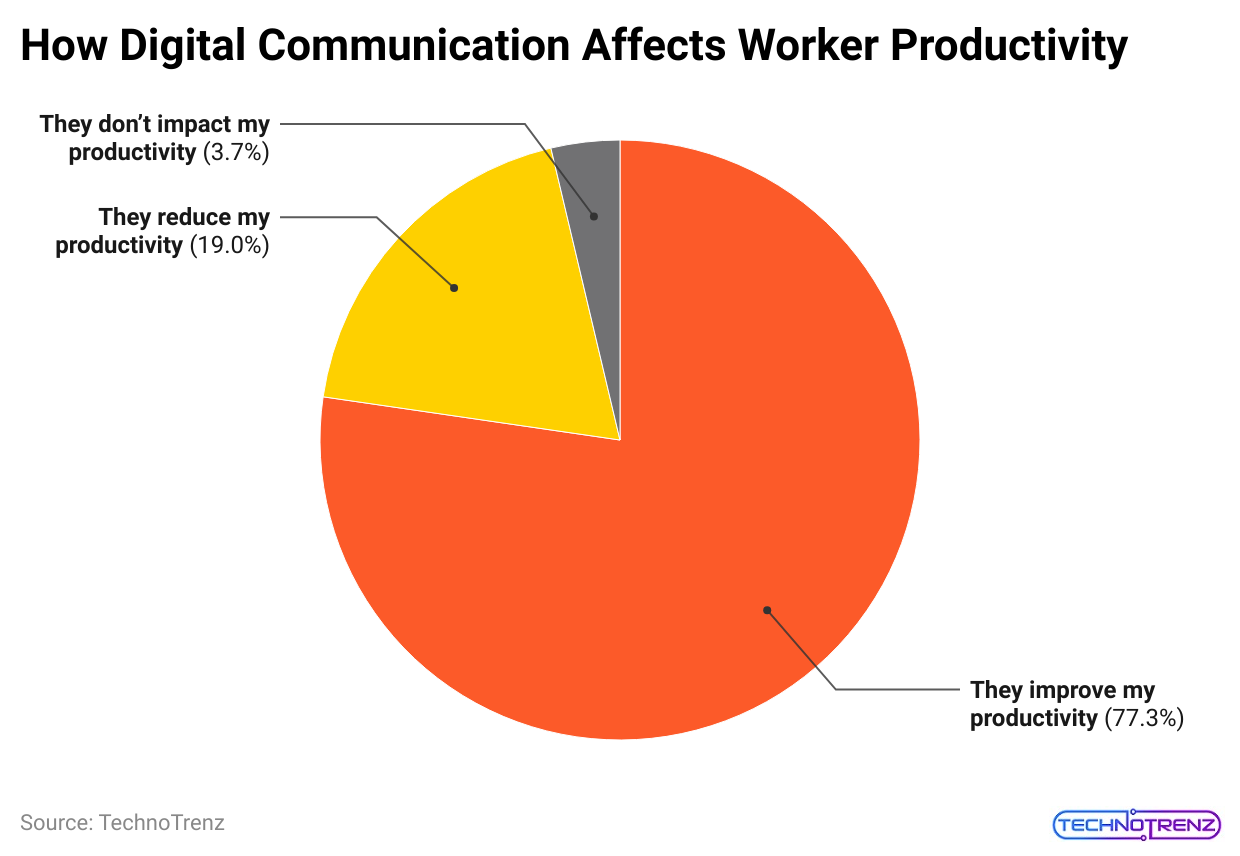
(Reference: emailtooltester.com)
- About 60% of 251 business managers believe that good communication boosts employees’ confidence at work.
- Effective communication affects employees’ productivity, engagement, retention, and trust.
- Employees who are included in detailed workplace communication, especially in remote jobs, are five times more likely to report higher productivity, as per Communication Statistics.
- Employees who feel connected and well-informed at work are 71% more productive than those who do not.
- This is because being highly connected helps workers be more efficient and creative. It’s also easier to succeed in an environment where one feels valued.
Employer Perception Of Communication Skills
- Around 70% of employers think communication skills are more important than technical skills.
- 45% of employers say the biggest problem is needing strong face-to-face communication skills.
- Communication Statistics stated that almost 80% of employers rate communication skills as the most important quality in job candidates.
- 60% of employers value oral communication skills more than any other trait.
- 80% of employers believe that good communication is crucial for the success of projects.
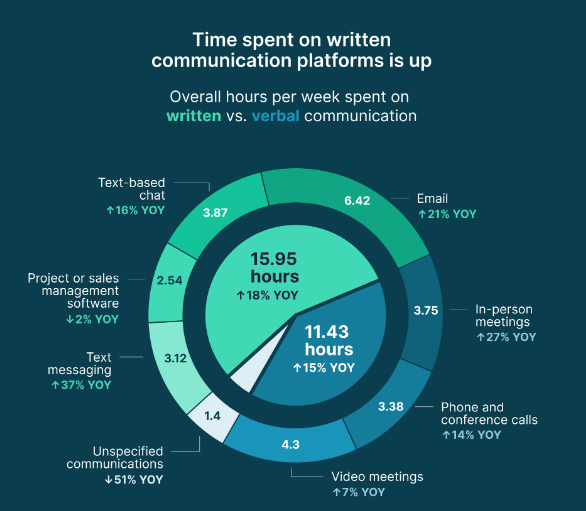
(Source: grammarly.com)
- Roughly 53% of employers think listening skills are very important for employees.
- 93% of employers consider soft skills to be as important as or more important than technical skills.
- Nearly 72% of employees think their managers could communicate more effectively.
- 89% of employers see poor communication as a major obstacle to productivity.
- Around 88% of communication experts say that executive communication is a key skill.
- 78% of HR professionals place high importance on communication skills when assessing job candidates.
- 74% of employers prefer communication skills over technical skills in employees.
- Communication Statistics stated that almost 81% of employees believe that top executives are good at communicating.
- 94% of recruiters think excellent communication skills are essential for job seekers.
Communication Platforms At Work
In 2023, the most popular communication channels in UK workplaces include a mix of old and new tools. Here’s a summary of the top ones:

(Reference: acuitytraining.co)
| Methods | % |
|
55.45% |
|
|
|
44.91% |
| Text Message |
43.10% |
|
Telephone Calls |
40.58% |
| Face to Face conversations |
38.27% |
|
Video Calls |
25.34% |
| Comments and notes on documents that are shared online |
8.74% |
|
Handwritten letters or memos |
7.80% |
|
Project management software |
7.15% |
| Slack |
5.99% |
|
GChat |
5.05% |
| Fax |
4.77% |
Emails at Workplace
- For many people, the first day in a new job often means setting up a new email address!
- In the UK, email is a key part of daily work communication for most workers.
- 55.45% of people who communicate with coworkers, managers, or clients use email.
However, this varies by age group:
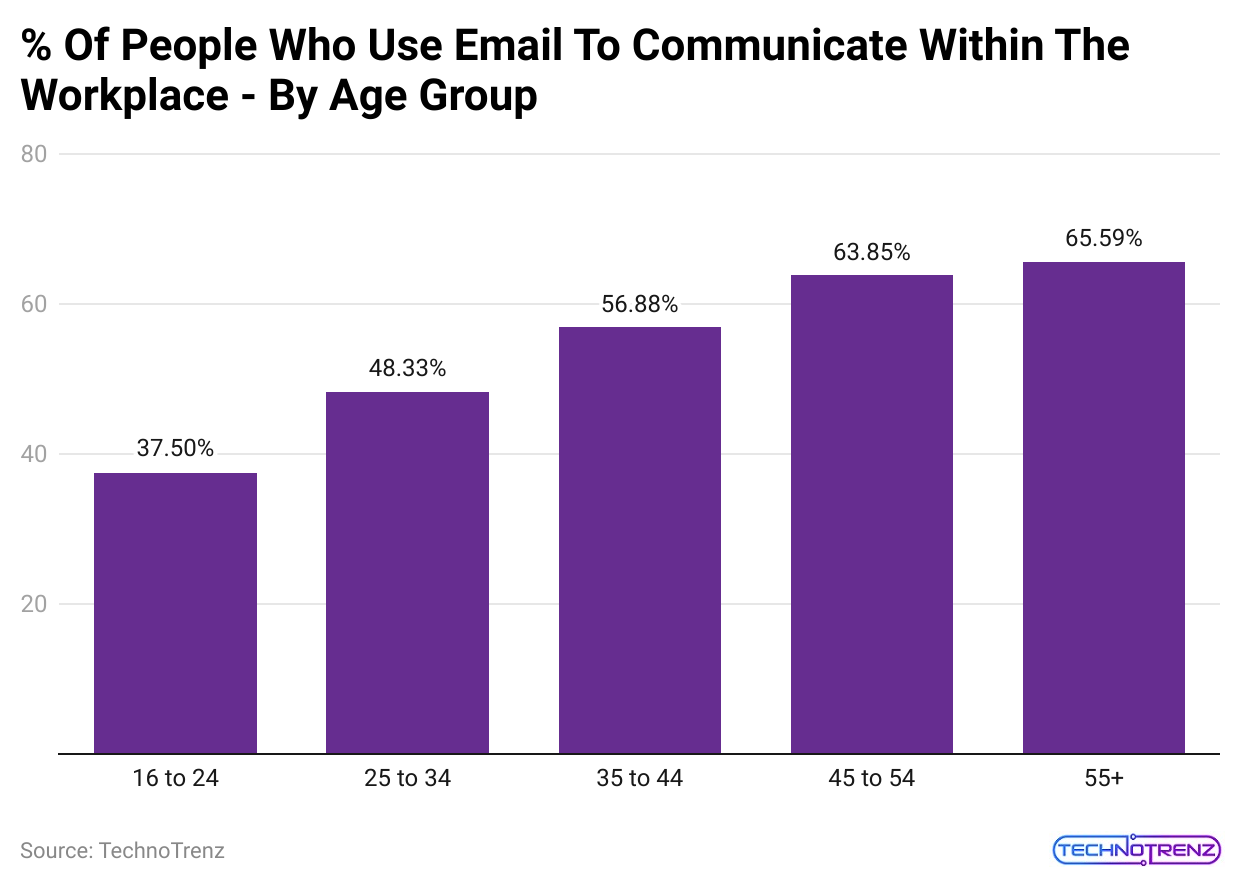
(Reference: acuitytraining.co)
| Age Group | % of people with managers/ colleagues that use email |
|
16 to 24 years |
37.50% |
| 25 to 34 years |
48.33% |
|
35 to 44 years |
56.88% |
| 45 to 54 years |
63.85% |
|
55+ |
65.59% |
WhatsApp at Workplace
- We’ve already seen that younger workers use text messages and WhatsApp more often for work communication.
- However, these tools are for more than just younger people.
- Workers of all ages use WhatsApp and text messages for work.
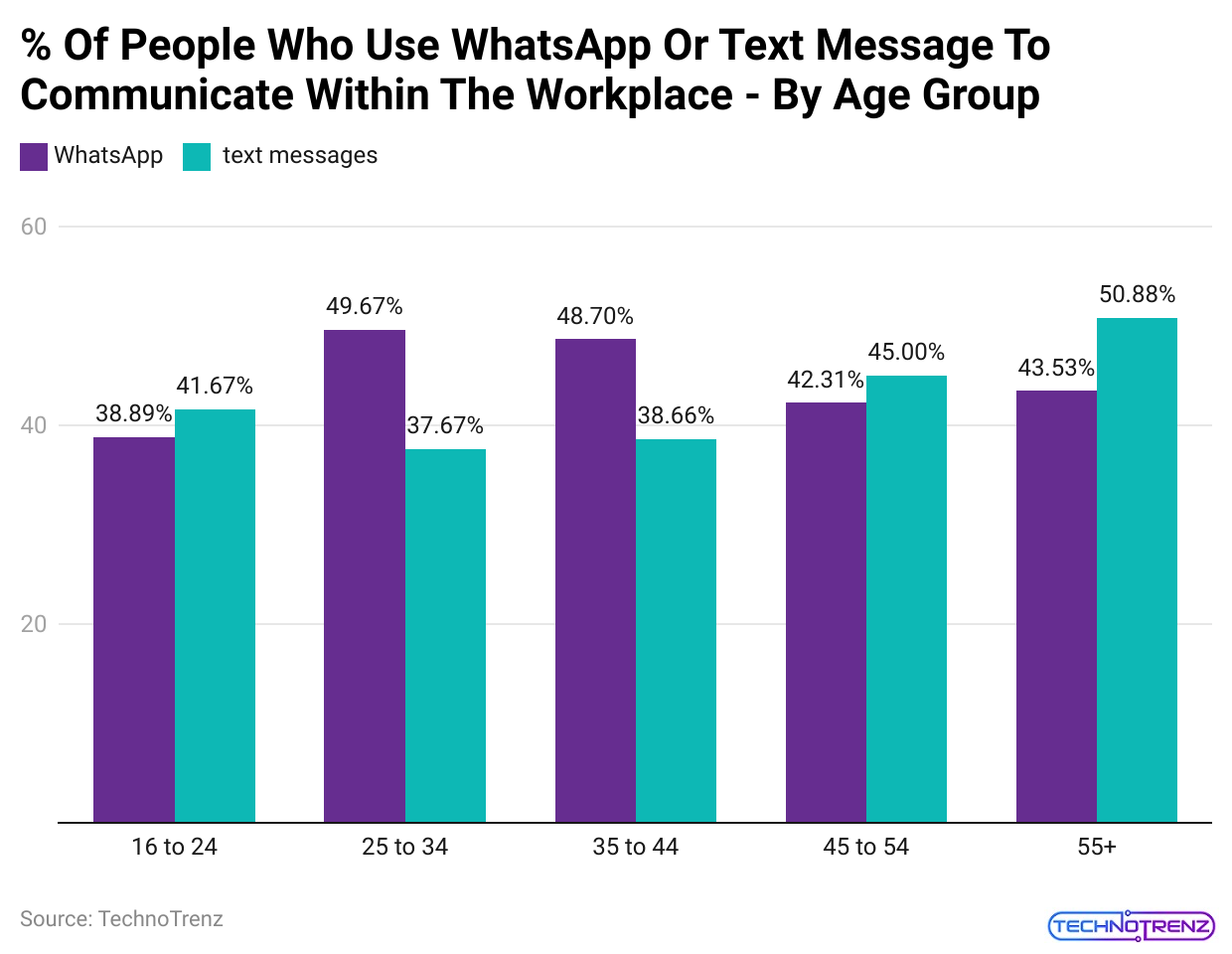
(Reference: acuitytraining.co)
| Age Group | % of people with colleagues/managers who use WhatsApp at work | % of people with colleagues/managers who use text messages at work |
|
55+ |
43.53% | 50.88% |
| 45 to 54 | 42.31% |
45.00% |
|
35 to 44 |
48.70% | 38.66% |
| 25 to 34 | 49.67% |
37.67% |
|
16 to 24 |
38.89% |
41.67% |
Phone Calls at Workplace
- We’ve noticed that younger workers more frequently use text messages and WhatsApp for work communication.
- However, these methods are wider than those used by younger people.
- In reality, employees of all ages use WhatsApp and text messages for work.
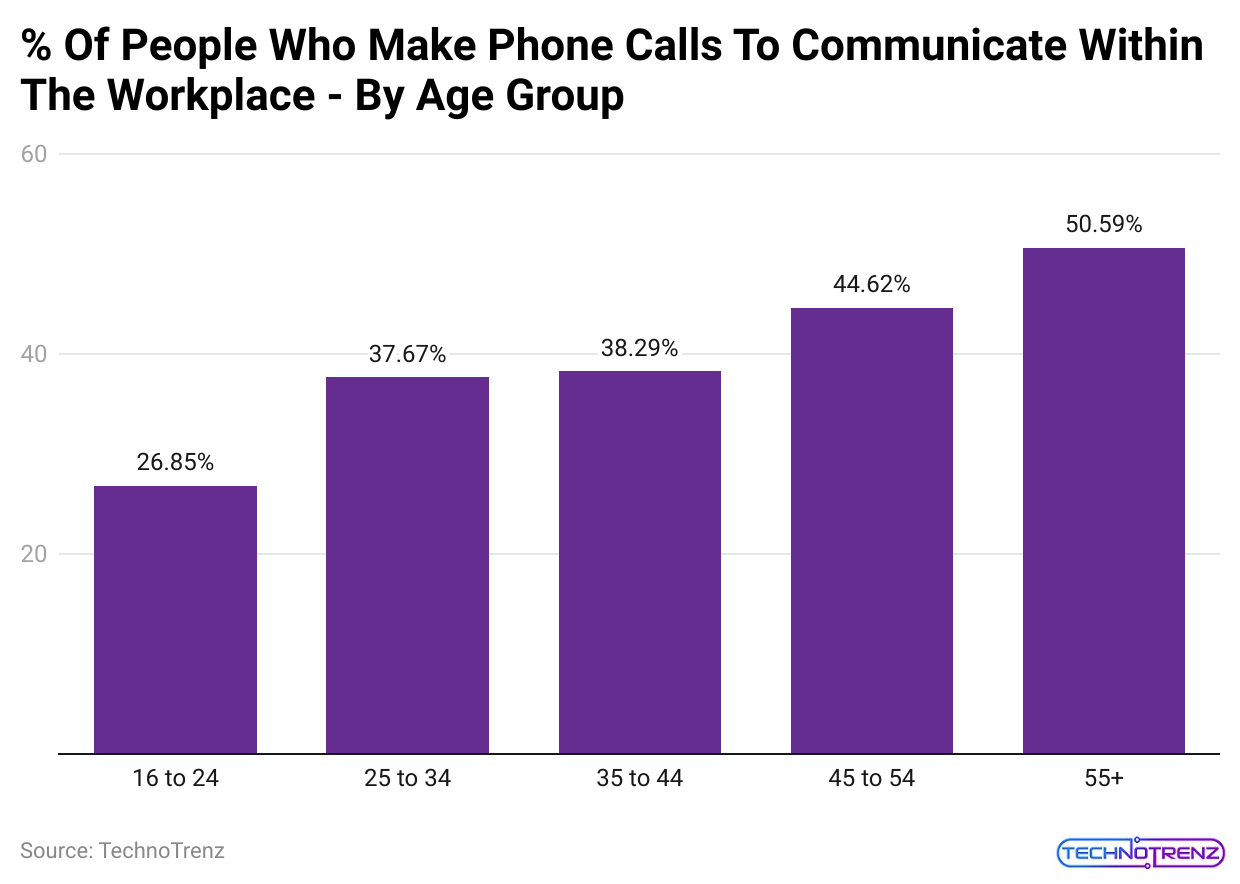
(Reference: acuitytraining.co)
| Age Group | % of people with colleagues/managers who use telephone calls at work |
|
55+ |
50.59% |
| 45 to 54 |
44.62% |
|
35 to 44 |
38.29% |
| 25 to 34 |
37.67% |
|
16 to 24 |
26.85% |
Face to Face conversation
- COVID-19 made it so that even workplaces that never allowed remote work had to start working from home.
- Although many people have gone back to the office after a couple of years and lockdowns, we still see more people working remotely than before the pandemic.
- This shift affects how often we meet face-to-face with colleagues or clients. However, scientific studies show that face-to-face interactions have many benefits.
- Nationwide, 38% of people use face-to-face communication at work. But this number varies by age group.

(Reference: acuitytraining.co)
| Age Group | % of people with colleagues/managers who use face-to-face conversations at work |
|
55+ |
47.06% |
| 45 to 54 |
40.00% |
|
35 to 44 |
37.55% |
| 25 to 34 |
33.00% |
|
16 to 24 |
30.56% |
Fax Machine at Workplace
- You might think that fax machines are mostly a thing of the past, replaced by email.
- But fax machines are still around.
- Across all respondents, 4.77% (almost 1 in 20) still use fax machines for work communication. Here’s the breakdown by age:
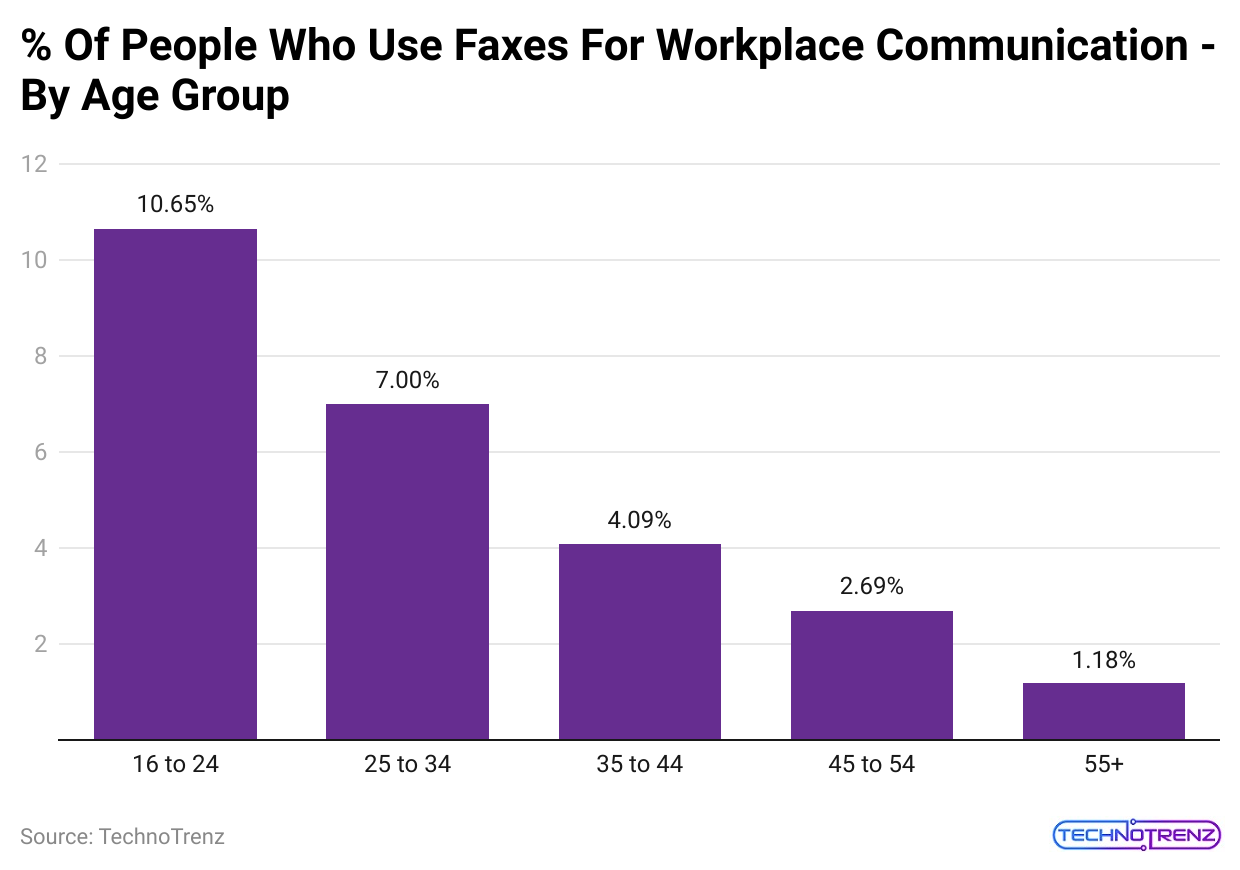
(Reference: acuitytraining.co)
| Age Group | % of people at work with colleagues/managers who use fax at work |
|
55+ |
1.18% |
| 45 to 54 |
2.69% |
|
35 to 44 |
4.09% |
| 25 to 34 |
7.00% |
|
16 to 24 |
10.65% |
- Even though fax machines seem outdated, younger people are more likely to use them at work.
- More than 10% of people aged 16 to 24 use fax machines for work, while only 1.18% of those over 55 do.
Video Calls in the Workplace
- During COVID and the lockdowns, a lot of us started using video calls.
- Nearly 30% of people aged 25 to 44 use video calls for work, about 25% of those aged 16 to 24 use them, and around 20% of those 45 and older do, too.
- Nationwide, 25.34% of workers use video calls for work. Here’s the breakdown By age:
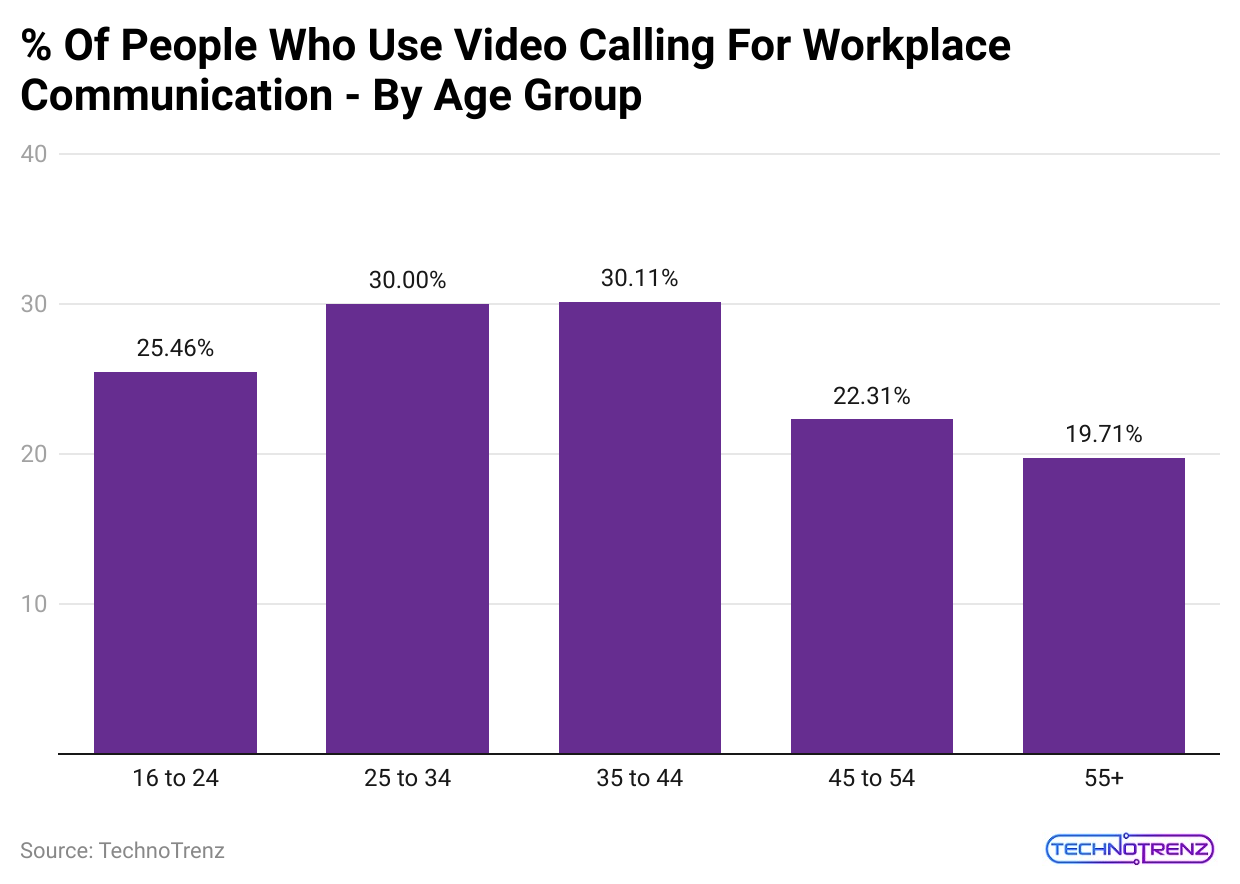
(Reference: acuitytraining.co)
| Age Group | % of people at work with colleagues/managers who use video calls at work |
|
55+ |
19.71% |
| 45 to 54 |
22.31% |
|
35 to 44 |
30.11% |
| 25 to 34 |
30.00% |
|
16 to 24 |
25.46% |
Googled video conferencing
- When lockdowns started around the world at the beginning of the pandemic, Zoom’s stock price went through the roof.
- With more people working remotely, there was a greater need for good tools for online meetings and teamwork.
- Video conferencing became essential for many, and Zoom came out as a major winner during the pandemic.
Employer And Employee Communication At Workplace Statistics
- 67% of employees think they’d be more productive with better communication.
- Only 5% of employees feel their employers communicate well during a crisis.
- Over 75% of employees feel they need to be included in important company news.
- 68% of employees prefer face-to-face conversations for discussing sensitive issues.
- As per Communication Statistics, around 60% of employees don’t trust their managers.
- 64% of employees prefer face-to-face communication for tough conversations.
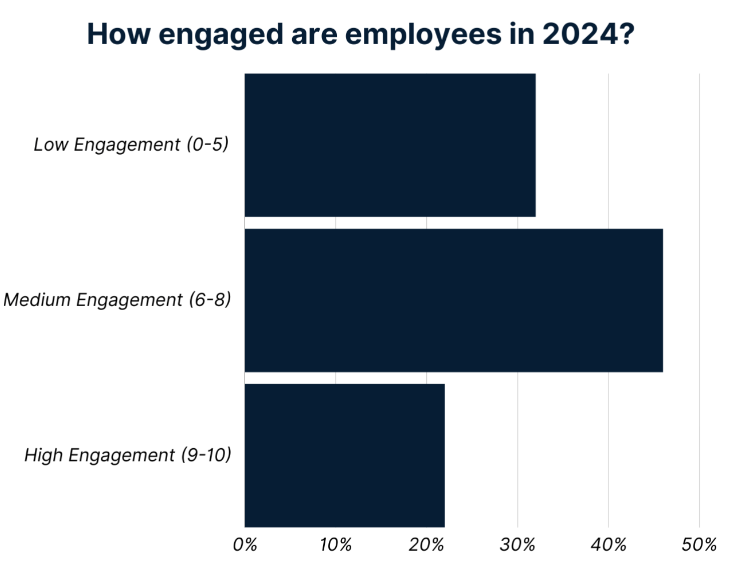
(Source: nectarhr.com)
- 72% of employees say they need more time to keep up with company news.
- Communication Statistics stated that almost 68% of employees prefer to get company news directly from the CEO.
- 45% of employees think the lack of feedback is the biggest barrier to their professional growth.
- Nearly 57% of employees have yet to receive any form of recognition in the past month.
- 64% of employees want to know more about what’s happening across their company.
- Roughly 29% of employees feel their opinions are ignored at work.
- Only 14% of employees believe their company keeps its promises.
- 53% of employees say communication is part of their weekly tasks.
- Around 64% of employees say they don’t get the chance to ask questions in company meetings.
- 76% of employees value opportunities for professional development more than updates on company news.
- Almost 82% of employees think open communication is important for job satisfaction.
- 43% of employees feel they need more information about company performance from their leaders.
- Nearly 64% of employees believe that better communication tools could improve their experience at work.
- 52% of employees feel that communication at their company is too one-sided from the top down.
- Communication Statistics stated that almost 31% of employees think their company relies too much on email.
- Only 20% of employees feel connected to their company’s culture.
- 67% of employees have quit a job because of poor communication.
- 74% of employees feel they need to get company information and news.
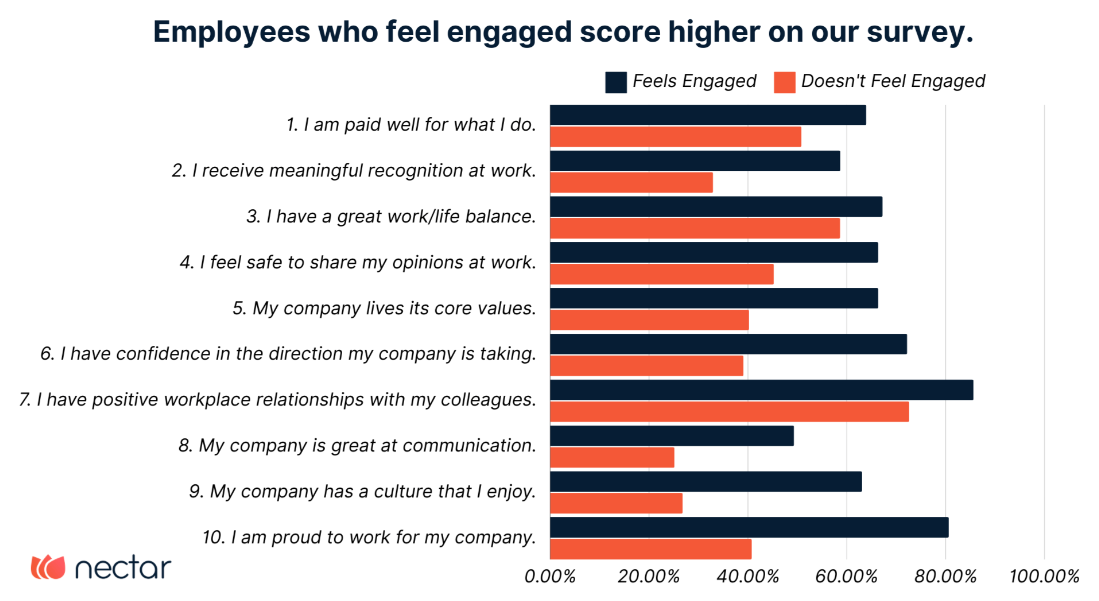
(Source: nectarhr.com)
- 53% of employees prefer talking to their peers rather than using email or phone.
- 82% of employees believe trust and communication are key to keeping them at a company.
- 47% of employees think their company needs to listen to their feedback.
- 64% of employees think email is not an effective communication tool.
- Only 13% of employees strongly agree that their leaders communicate effectively.
- Nearly 53% of employees handle communication tasks weekly.
- 62% of employees believe their leaders need to share information openly.
- Almost 26% of employees feel that a lack of honest communication affects their productivity.
- Only 17% of employees believe their company communicates its values well.
- 67% of employees value communication from their direct supervisor more than from senior leaders.
- Roughly 33% of employees say poor communication is a factor in their decision to leave a job.
- 76% of employees believe that transparency leads to better workplace communication.
- Almost 53% of employees prefer in-person communication over email or phone.
- 65% of remote employees feel they need more social interaction with colleagues.
- Nearly 67% of millennials prefer using instant messaging for work communication.
- 58% of employees feel their company needs to give more feedback.
- Around 36% of employees want more information from leaders about company performance.
- Communication Statistics stated that almost 79% of HR professionals believe strong communication positively impacts employee engagement.
- 82% of employees want more information about how decisions are made in their company.
- 68% of employees think leadership transparency is essential for business success.
- 45% of employees rate their company poorly in communicating major changes.
Most Used Language In Business Communication

(Source: market-inspector.co)
In today’s globalized world, speaking the right language is key to international success. Here’s a look at the top languages used in global business communication in 2024:
- English: Spoken by over 1.5 billion people, English is the official language in major economies like the US, UK, and Canada. It’s crucial for communication, negotiations, and trade across countries.
- Mandarin Chinese: With 1.15 billion speakers, Mandarin is essential for accessing the huge Chinese market, which is a leader in manufacturing, technology, and e-commerce.
- Spanish: Spoken by 559 million people worldwide, Spanish is a major language for commerce in Latin America and the US.
- German: German is vital for business in Europe, especially in countries like Germany, Austria, and Switzerland. It’s also significant in scientific and research fields.
- Arabic: With 360.5 million native speakers, Arabic is becoming more important due to the growing economies in the Middle East and parts of Africa.
- French: Spoken by 300 million people, French opens up markets in Africa, Europe, and Canada.
- Japanese: Japan’s leading role in technology and innovation makes Japanese a valuable language for entering that market.
These languages are important not only because of their large number of speakers but also because of their economic, cultural, and diplomatic significance.
However, overcoming language barriers and different communication styles can be challenging. For example, using English as a common language in European business settings can sometimes lead to misunderstandings due to nuances that could be improved in translation.
Communication At The Workplace And Employee Engagement
- 91% of mobile users keep their phones within arm’s reach 24/7.
- Communication Statistics stated that almost 94% of recruiters use LinkedIn to check out candidates.
- 83% of employees want to receive feedback regularly at work.
- 89% of customers stay with companies that have strong customer engagement across different channels.
- Companies with good communication strategies are 50% more likely to have lower employee turnover.
- Over 60% of employees would stay longer at a job if they felt their feedback was valued.
- 87% of employees believe their organizations should answer questions honestly and openly.
- 70% of small businesses admit they need a formal written internal communication plan.
- Over 75% of employers consider teamwork and collaboration to be very important.
- Communication Statistics stated that around 64% of employees are more likely to trust a CEO who is active on social media.
- On average, recruiters spend only about 6 seconds reviewing a candidate’s resume.
- 88% of employees want to be able to personalize their internal communication tools.
- Two-thirds of businesses with a digital transformation strategy focus on improving customer experience.
- 85% of employees are disengaged at work due to poor communication.
Communication With Various Generations At The Workplace
- In addition to figuring out how to keep company culture strong in a hybrid work environment, intergenerational communication was a big focus in 2023.
- As younger workers join the workforce, HR and internal communications teams are working on how to effectively communicate with Gen Z employees while still engaging Baby Boomers at the other end of the age spectrum.
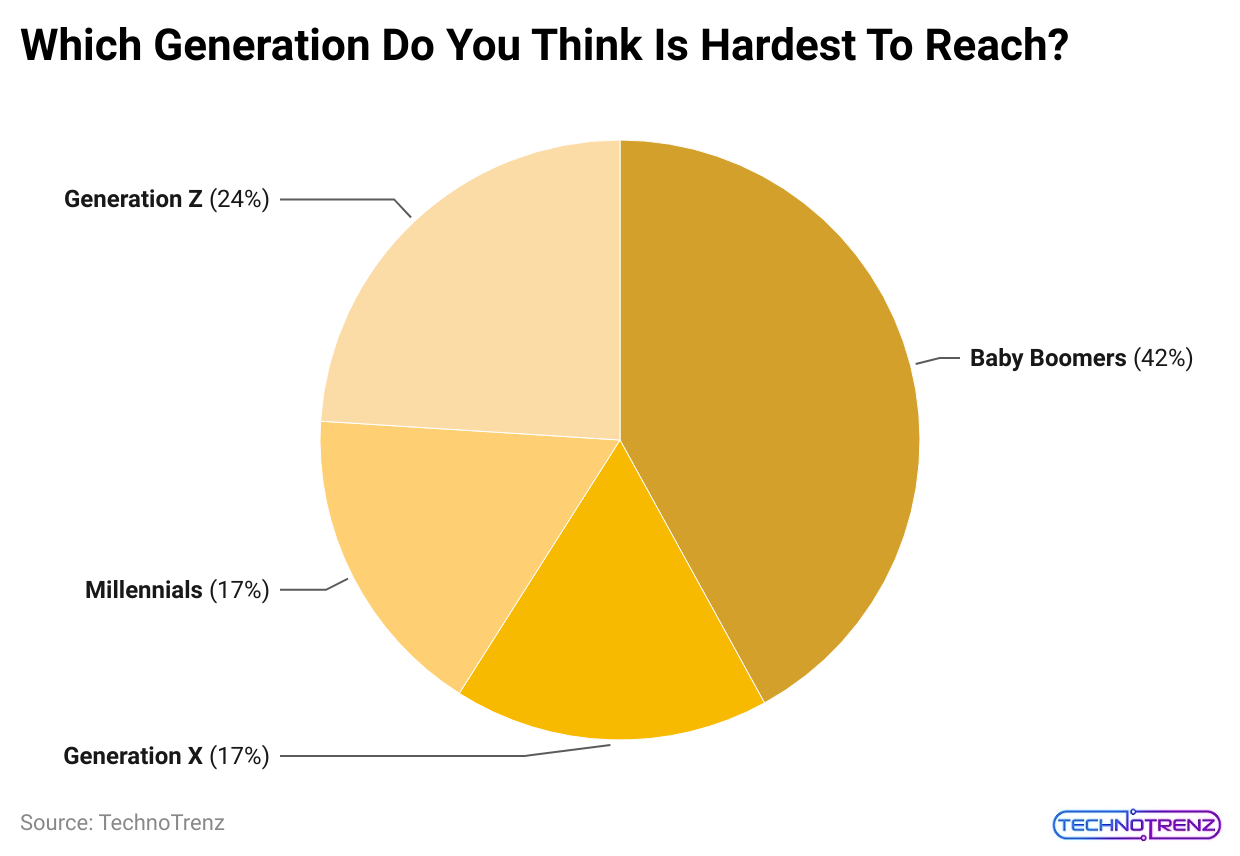
(Reference: interactsoftware.com)
The following are the statistics:
- Baby Boomers (Ages 58-67): 42%
- Generation X (Ages 42-57): 17%
- Millennials (Ages 26-41): 17%
- Generation Z (Ages 25 and below): 24%
- Having four generations in the workforce means that employees have a wide range of tech skills and communication preferences.
- From TikTok videos to in-person meetings, modern communicators need to find the best ways to deliver messages that will connect with a diverse audience.
- There’s no one-size-fits-all approach to communicating across different age groups.
- The best solution is to use integrated multichannel platforms that provide easy access to email, intranet, mobile, digital signage, and more.
- By using a combination of these tools, communicators can reach a wider audience effectively.
Consequences Of Poor Communication In Workplace Statistics
- Poor communication or lack of communication at all can have serious consequences for a business.
- Here are some major problems that employers and business leaders face due to bad workplace communication:
| Consequences of Poor Communication | Percentage of Employers Who Agree |
| Lost employees |
10% |
|
Lost customers |
12% |
| Bad customer experience |
30% |
|
Burnout, stress, fatigue |
42% |
| Missed messages, lost files |
53% |
|
Wastage of time |
68% |
| Financial losses |
38% |
|
Missed deadlines and extended timelines |
42% |
| Decrease in productivity |
43% |
- According to a Communication Statistics report, poor communication leads to higher stress and more employees leaving their jobs, which lowers job satisfaction for 34% of workers.
- 30% of employees say that they need to be more confident in their professional roles.
- Microsoft’s 2022 work index found that 43% of employees were somewhat or very likely to switch jobs in 2023 because of poor work communication.
- 48% of Gen X employees think stress would hurt their work performance, and 43% said that seeing unhappy employees would make them less interested in joining a company.
- 93% of business leaders and 80% of knowledge workers agree that their ability to work well depends heavily on how effectively their colleagues communicate their needs.
- 86% of corporate executives believe that poor communication is a major cause of workplace failures.
- Companies with over 100,000 employees lose about $62.4 million a year because of miscommunication.
- Companies with 100 or fewer employees report losing around $420,000 each year due to miscommunication.
- 46% of businesses say they’ve lost clients because of poor communication, resulting in a total loss of about $75 billion per year.
- A loss of $400,000 can easily bankrupt a small business, showing how crucial it is to improve communication at work, as per Communication Statistics.
- Employees spend up to 17 hours a week sorting out misunderstandings caused by miscommunication.
Conclusion
Effective communication at work is essential for creating a cooperative work environment. It boosts employee confidence and engagement and helps employers save millions of dollars each year by reducing miscommunication and improving productivity. Employers also need to focus on non-verbal communication, which makes up 93% of business communication.
Companies are now looking to hire candidates with strong communication skills. Therefore, it’s important for employees to improve their communication abilities and for employers to adopt strategies that enhance communication in the Workplace for overall growth and success. We have shed enough light on Communication Statistics through this article.
Sources
FAQ.
Here are some important statistics about workplace communication:
- 86% of employees believe that ineffective collaboration and communication are major reasons for workplace failures.
- Improving internal communication can boost organisational productivity by up to 25%.
- Verbal Communication: Talking or using spoken words to share messages.
- Nonverbal Communication: Using body language, facial expressions, and gestures to communicate.
- Written Communication: Sending messages through emails, reports, and other written forms.
- Visual Communication: Using images, charts, and videos to convey information.
- Listening: Paying attention and understanding what others are saying.

Saisuman is a professional content writer specializing in health, law, and space-related articles. Her experience includes designing featured articles for websites and newsletters, as well as conducting detailed research for medical professionals and researchers. Passionate about languages since childhood, Saisuman can read, write, and speak in five different languages. Her love for languages and reading inspired her to pursue a career in writing. Saisuman holds a Master's in Business Administration with a focus on Human Resources and has worked in a Human Resources firm for a year. She was previously associated with a French international company. In addition to writing, Saisuman enjoys traveling and singing classical songs in her leisure time.




